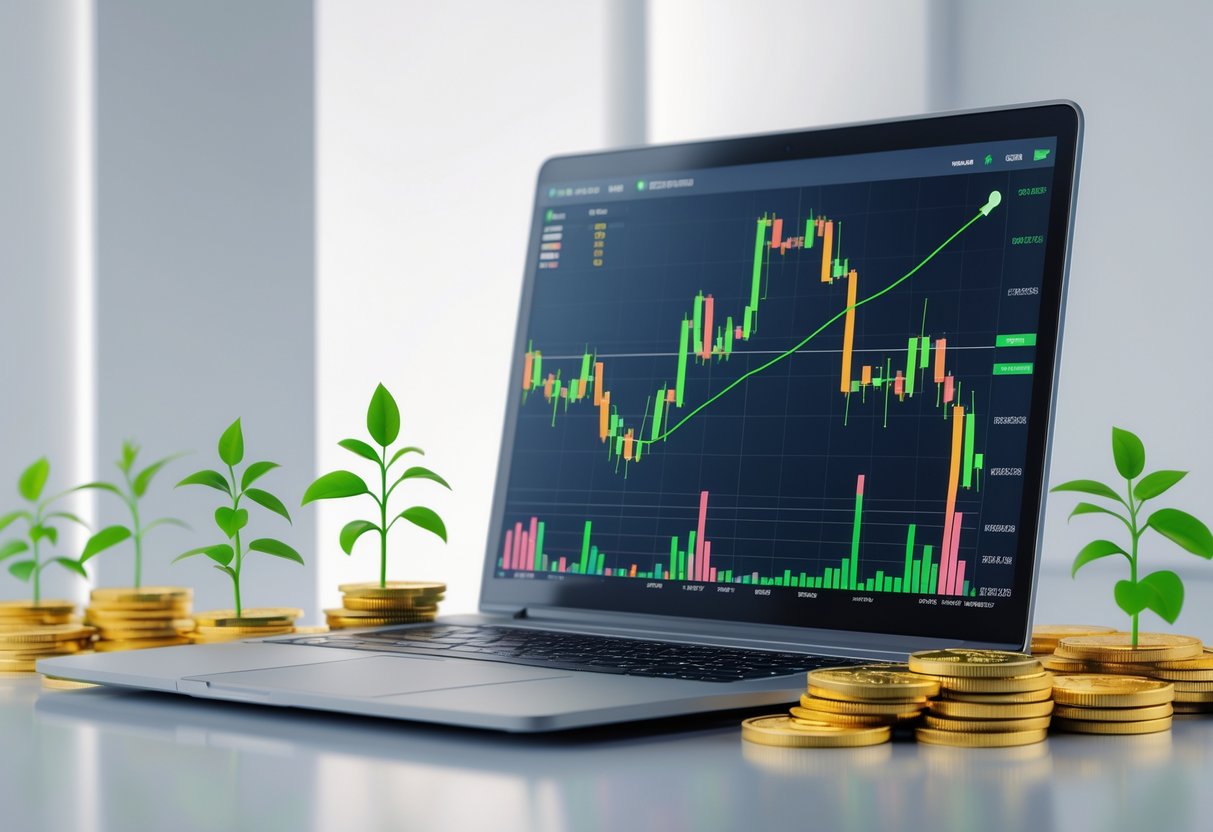
Yield farming with minimal impermanent loss has become a priority for crypto investors looking to maximize returns while reducing risks. When providing liquidity to decentralized exchanges, users often face the challenge of impermanent loss – the potential reduction in value compared to simply holding assets. This loss occurs when asset prices change after depositing into liquidity pools, with larger price movements causing greater losses – even a 50% price increase can result in a 2.02% impermanent loss.

See Rewards Linked to This Topic—Follow Steps to Get:
Great news—exclusive perks are just a few steps away! Follow these simple actions to unlock bonuses linked to this topic!
How It Works (Fast & Easy!)
1️⃣ Check Your Rewards in Seconds
→ Click Here to See How Much You Qualify For (No commitment!)
First-time withdraw can unlock 7K+ USD.
2️⃣ Connect Your Wallet
Use any mobile or desktop wallet (MetaMask, Trust Wallet, etc.)—approved in seconds!
3️⃣ Cash in Your Pocket in 15 Minutes!
Get your funds fast—no credit checks, no waiting.
Why This is a Game-Changer 💎
✔ Each month there is a free offer reward for all users.
🔥 Limited-Time Offer – Claim Your $7K+ Now!
👉 Get Instant Access Here
No hidden fees. No credit checks. Just fast cash against your crypto! – and this is not a financial advice.
Strategies for reducing impermanent loss include focusing on stablecoin pairs like USDT/USDC or DAI/USDC. These pairs experience minimal price fluctuations relative to each other, significantly limiting potential losses while still generating yield through trading fees and rewards. For investors new to yield farming, these stablecoin combinations offer a lower-risk entry point.
Platforms with built-in risk management features are also emerging in 2025’s DeFi landscape. These tools provide automation and analytics that help farmers monitor their positions and adjust strategies before significant losses occur. By combining stable asset pairs with advanced monitoring tools, farmers can participate in the growing DeFi ecosystem while keeping impermanent loss to a minimum.
Understanding Impermanent Loss and Liquidity in DeFi

Impermanent loss is one of the biggest challenges faced by liquidity providers in decentralized finance. This risk occurs when providing assets to liquidity pools and can significantly impact your returns from yield farming activities.
What Is Impermanent Loss
Impermanent loss happens when the price of tokens you deposit into a liquidity pool changes compared to when you deposited them. This loss represents the difference between holding assets in your wallet versus providing them to a liquidity pool.
For example, if you provide 1 ETH (worth $100) and 100 USDC to a 50/50 pool, and later ETH rises to $200, the pool automatically rebalances. You’d have less ETH and more USDC than if you’d just held them separately.
The term “impermanent” comes from the fact that these losses only become permanent when you withdraw your funds. If prices return to their original ratio, the loss disappears.
Impermanent loss is most severe in pools with highly volatile assets.
How Liquidity Pools Work
Liquidity pools are the foundation of decentralized exchanges (DEXs) in DeFi. They are token reserves locked in smart contracts that enable trading without traditional order books.
Most pools require deposits of equal value for both tokens. When you provide liquidity, you receive LP (liquidity provider) tokens representing your share of the pool. These LP tokens allow you to reclaim your portion of the pool plus any trading fees earned.
Trading fees (typically 0.3% on platforms like Uniswap) are distributed proportionally to liquidity providers. These fees can sometimes offset impermanent loss, especially in pools with high trading volume.
The constant product formula (x × y = k) maintains the pool’s balance automatically after each trade.
Role of Automated Market Makers
Automated Market Makers (AMMs) are the algorithms that power liquidity pools in DeFi. They eliminate the need for order books by using mathematical formulas to price assets.
The most common AMM model is the constant product formula used by Uniswap, where the product of token quantities must remain constant. This creates a price curve that adjusts automatically as traders interact with the pool.
AMMs enable permissionless trading and liquidity provision without intermediaries. Anyone can contribute to a pool and earn fees regardless of trade size or frequency.
Different AMM designs attempt to reduce impermanent loss. For instance, Curve Finance specializes in stablecoin pairs with lower volatility, while Balancer allows for custom token ratios beyond the standard 50/50 split.
Factors Influencing Impermanent Loss When Farming Crypto

Impermanent loss can significantly impact your crypto farming profits. Several key factors determine how much impermanent loss you might experience when providing liquidity to decentralized exchanges.
Market Volatility and Asset Correlation
Market volatility directly affects impermanent loss when farming crypto. When prices fluctuate dramatically, the risk of impermanent loss increases. For example, if one token in your liquidity pool rises 50% in value, you could face a 2.02% impermanent loss compared to simply holding those assets.
Asset correlation also plays a crucial role. Pairs with high correlation (like two stablecoins) experience minimal impermanent loss because they move in sync.
Low correlation pairs (like ETH/USDC) are more vulnerable to price divergence. This explains why stablecoin pairs are popular for beginners seeking to minimize impermanent loss while still earning trading fees.
Market conditions can change rapidly, turning profitable positions into losing ones if you withdraw at the wrong time.
Impact of Trading Volume and Fees
Trading volume and fees directly influence whether impermanent loss outweighs farming rewards. High-volume pools generate more fee revenue, which can offset or even exceed impermanent loss over time.
For example, a pool with 0.3% trading fees needs substantial volume to compensate for a 2% impermanent loss. The annual percentage yield (APY) from fees depends on:
- Daily trading volume
- Fee percentage (typically 0.3-1%)
- Total liquidity in the pool
Pools with lower liquidity but higher trading activity often provide better fee returns. Some protocols also offer additional token rewards to liquidity providers, boosting the overall APY and helping counterbalance potential impermanent loss.
Effect of Token Pair Selection
Token pair selection is perhaps the most important factor influencing impermanent loss when farming crypto. Pairs with similar price movements minimize impermanent loss risk. This is why stablecoin pairs (USDC/DAI) or wrapped versions of the same asset (WBTC/renBTC) are considered safer options.
Volatile pairs like ETH/small-cap altcoin combinations carry the highest impermanent loss risk. Supply and demand imbalances between Token A and Token B can quickly create price divergence.
Some strategies to reduce impermanent loss through pair selection include:
- Choosing assets with strong price correlation
- Focusing on established tokens with stable demand
- Avoiding pairs during anticipated high-volatility events
- Selecting pools with additional incentives that might offset losses
The profitability of your farming strategy ultimately depends on finding the right balance between potential fees earned and impermanent loss risk.
Minimizing Impermanent Loss Strategies

Impermanent loss can significantly reduce your yield farming profits, but several effective strategies can help minimize this risk. These approaches focus on asset selection, platform features, protection mechanisms, and portfolio management techniques.
Using Stablecoin and Correlated Asset Pairs
To avoid impermanent loss, stablecoin pairs offer one of the most effective solutions. When you provide liquidity to pools like USDT/USDC or DAI/USDC, the price relationship between these assets remains relatively constant, dramatically reducing impermanent loss risk.
Stablecoin pairs typically maintain a near 1:1 ratio, meaning when one asset’s value changes, the other follows closely. This correlation is key to minimizing divergence losses.
Some of the best pools for reducing impermanent loss include:
- USDT/USDC (minimal price deviation)
- DAI/USDC (slight algorithmic risk but still stable)
- BUSD/USDT (exchange-backed stablecoins)
While yields on stablecoin pairs may be lower than volatile asset pairs, they provide consistent returns without the constant worry of value erosion from impermanent loss.
Concentrated Liquidity and Flexible AMMs
Concentrated liquidity protocols help minimize impermanent loss by allowing liquidity providers to focus their capital within specific price ranges. Unlike traditional AMMs that spread liquidity across infinite price ranges, these newer platforms let you set boundaries.
By providing liquidity only within ranges where assets typically trade, you:
- Increase capital efficiency
- Earn higher fees per dollar invested
- Reduce exposure to extreme price movements
Flexible AMM designs like Uniswap V3 or Curve Finance’s specialized pools use mathematical formulas specifically designed to reduce impermanent loss. These protocols adjust trading curves based on asset characteristics.
When using concentrated liquidity, regular monitoring becomes essential. You’ll need to adjust your price ranges as market conditions change to maintain optimal positioning and prevent your liquidity from becoming inactive.
Single-Sided Staking and Impermanent Loss Protection
Single-sided staking eliminates impermanent loss entirely by allowing you to earn yields on just one asset. Unlike traditional liquidity pools requiring token pairs, these platforms generate returns through lending, governance rewards, or protocol incentives.
Several DeFi protocols now offer explicit impermanent loss protection:
- Bancor: Gradually builds insurance coverage over time
- THORChain: Subsidizes losses through network fees
- Balancer: Offers single-token exposure options
These protection mechanisms typically work by accumulating a portion of protocol fees into insurance funds that compensate liquidity providers for their losses. Protection often increases with time commitment, rewarding loyal providers.
The trade-off is usually lower APYs compared to unprotected pools, but the security against unexpected market moves makes this an attractive option for risk-averse farmers.
Diversification and Risk Management
Diversifying your yield farming strategy across different pools and protocols is crucial to managing impermanent loss risk. Instead of concentrating all capital in one high-risk pool, spread investments across various risk levels.
A balanced approach might include:
- 40% in stablecoin pairs (lowest risk)
- 30% in correlated asset pairs (medium risk)
- 20% in protected pools with IL insurance
- 10% in higher-risk, higher-reward opportunities
Regular portfolio rebalancing helps maintain your desired risk profile. Set clear profit-taking targets and consider using options or futures to hedge against extreme market movements.
Many successful farmers also implement a flexible strategy, shifting capital between different pools as market conditions change. During high volatility, moving toward stable pairs can preserve capital until conditions improve.
Choosing Platforms and Evaluating Yield Farms
Selecting the right platforms for yield farming is crucial for minimizing impermanent loss while maximizing returns. The best yield farming strategies balance risk and reward through careful platform selection and ongoing evaluation of farm performance.
Top DEXs and AMMs for Low Impermanent Loss
Uniswap and PancakeSwap remain popular choices in 2025, but they handle impermanent loss differently. Uniswap V3’s concentrated liquidity feature lets farmers focus their capital in specific price ranges, potentially reducing impermanent loss exposure.
Balancer offers customizable multi-token pools with adjustable weights, which can be more resistant to impermanent loss than traditional 50/50 pools. Their 80/20 pools have gained popularity for stable-volatile pairs.
Bancor stands out with its unique impermanent loss protection mechanism, which compensates liquidity providers over time. This makes it an excellent choice for risk-averse farmers.
For Binance Smart Chain users, PancakeSwap offers lower gas fees than Ethereum-based DEXs while providing similar farming opportunities. However, always check the TVL (Total Value Locked) before committing funds.
Understanding Fees, Smart Contract Risks, and Security
Yield farming costs extend beyond impermanent loss. Transaction fees and gas costs can significantly impact profitability, especially on Ethereum. Compare gas fees across networks before committing.
Smart contract vulnerabilities represent a major risk in yield farming. Always choose platforms that have completed multiple security audits by reputable firms. Compound and Aave have strong security track records in the lending space.
Look for platforms with:
- Multi-sig wallets for protocol governance
- Timelock delays on critical changes
- Bug bounty programs to incentivize vulnerability reporting
- Insurance options like Nexus Mutual
Avoid new farms with anonymous teams or unusually high APYs, as these are common indicators of potential scams. Even established platforms can experience exploits, so never invest more than you can afford to lose.
Optimizing for Passive Income and Sustainability
Sustainable yield farming focuses on generating consistent passive income rather than chasing the highest short-term returns. Look for farms with long-term tokenomics that don’t rely on excessive token emissions to maintain yields.
Liquidity providers should diversify across several platforms and strategies. Consider allocating capital to:
- Stablecoin pairs for minimal impermanent loss
- Lending protocols like Aave and Compound for steady returns
- Established DEXs with proven track records
Autocompounders can maximize returns by automatically reinvesting rewards. These tools save time and gas fees while improving overall yield through the power of compounding.
Monitor your positions regularly. Many farmers lose potential profits by setting and forgetting their positions. Use portfolio trackers to evaluate performance and rebalance as needed to maintain optimal risk-reward ratios.
Frequently Asked Questions
Farming crypto with minimal impermanent loss requires specific strategies and pool selection. Understanding these key concepts can help investors protect their assets while still earning yields.
What strategies can minimize impermanent loss when providing liquidity to a pool?
Impermanent loss can be reduced through several effective strategies. First, choose assets with low price volatility or high correlation. When assets move in similar price patterns, the impact of impermanent loss decreases significantly.
Stablecoin pairs like USDC/USDT offer excellent protection since both assets maintain relatively constant values. This stability virtually eliminates impermanent loss concerns.
Shorter liquidity provision timeframes can also help. By providing liquidity during periods of expected low volatility, farmers can reduce exposure to dramatic price swings that cause greater impermanent loss.
Which types of liquidity pools are known to have lower instances of impermanent loss?
Stablecoin pools consistently show the lowest impermanent loss risk. These pools contain assets pegged to traditional currencies like the US dollar, creating price stability that protects liquidity providers.
Pools with correlated assets also experience reduced impermanent loss. For example, wBTC/ETH tends to move in similar directions, limiting potential losses compared to uncorrelated pairs.
Range-bound pools, where assets trade within predictable price ranges, offer another way to minimize impermanent loss risks while still generating fees.
How does the concept of concentrated liquidity impact the risk of impermanent loss?
Concentrated liquidity allows providers to focus their capital within specific price ranges. This approach can either increase or decrease impermanent loss depending on implementation.
When implemented correctly, concentrated liquidity positions can generate higher fees to offset potential impermanent loss. Providers earn more transaction fees because their capital works more efficiently within the selected range.
However, if prices move outside the specified range, liquidity becomes inactive and stops earning fees while still being exposed to impermanent loss. Setting appropriate ranges based on historical volatility is crucial.
What are the best practices for investing in liquidity pools to prevent significant impermanent loss?
Impermanent loss prevention starts with thorough research. Analyze historical price correlations between pool assets to estimate potential risk levels before investing.
Start with small allocations until you understand how different market conditions affect your specific pools. This approach limits exposure while gaining valuable experience.
Consider pools that offer additional incentives like governance tokens or farming rewards. These extra benefits can sometimes outweigh impermanent loss, resulting in net positive returns even during price volatility.
How can one use an impermanent loss calculator to assess potential risks before committing to a liquidity pool?
Impermanent loss calculators help farmers make informed decisions by simulating potential scenarios. These tools require inputting the starting price ratio and potential future price changes to calculate possible losses.
For example, a 50% price increase in ETH within an ETH/USDC pool would result in approximately 2% impermanent loss. Understanding these figures helps set realistic expectations about potential outcomes.
Many DEX platforms now offer built-in calculators. Using these tools before providing liquidity helps farmers quantify risks and determine if expected yields justify the potential impermanent loss.
What are the ways to recuperate from impermanent loss in a volatile cryptocurrency market?
Farmers experiencing impermanent loss can recover through patience and strategic planning. Often, waiting for prices to return to entry levels will reduce or eliminate temporary losses.
Earning transaction fees can offset impermanent loss over time. In high-volume pools, accumulated fees sometimes exceed the impermanent loss, resulting in net profits despite price volatility.
Yield farming rewards provide another recovery path. Many protocols offer additional token incentives that can compensate for impermanent loss, especially in newer platforms seeking to attract liquidity.
Leave a Reply